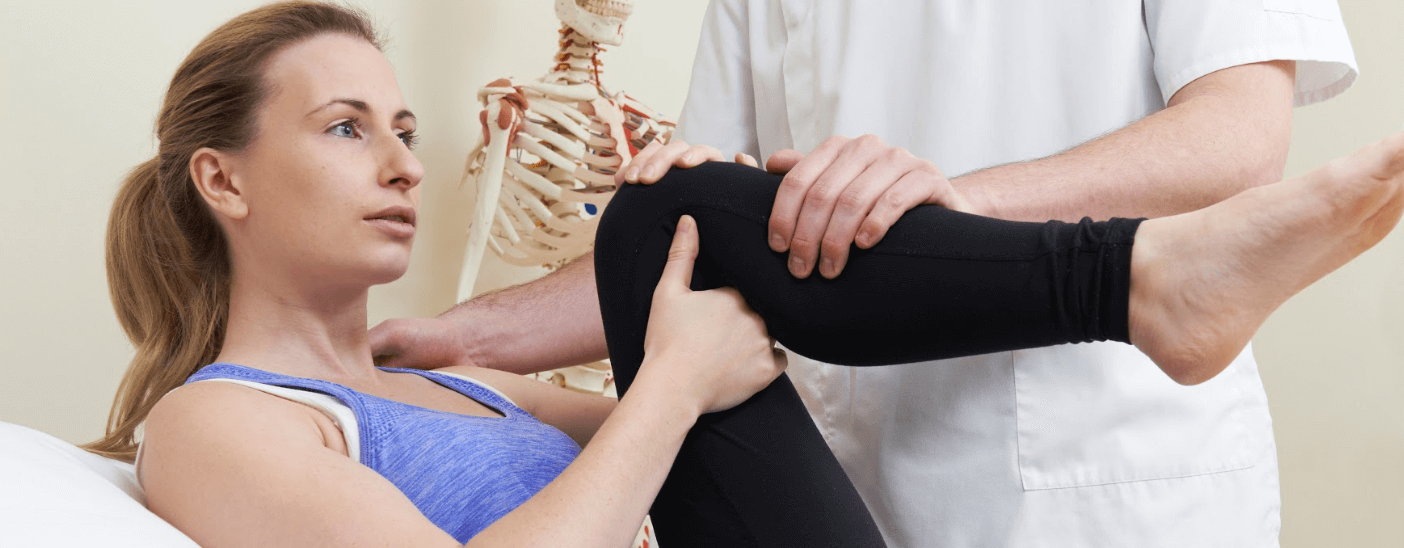Kick Knee and Hip Pain to the Curb with Physical Therapy

The hips and knees are both very commonly reported areas of discomfort. This pain becomes exceptionally common as people age, due to the “wear and tear” of cartilage in the hips, knees, and lower back. However, people can also experience hip and knee pain from overuse, injury, or underlying conditions, such as arthritis. Some cases may become severe enough that surgery is unavoidable; however, physical therapy has been proven to treat hip and knee pain without the need for pain-relieving drugs or surgery. Call Farmingdale Physical Therapy West and Lake Shore Physical Therapy today for more information on how our physical therapists can help you overcome your hip and knee pain!
How is hip and knee pain determined?
When you schedule an appointment with a physical therapist, the first thing you can expect is a thorough evaluation. Your physical therapist will examine you to figure out where the painful area is, as well as where the pain is stemming from. For example, sometimes pain can be stemming from the hips but can be felt in the lower back, buttocks, groin, or the front/side of the hips. Additionally, pain stemming from the knees can be felt on the front or back of the knee joint. It can also be felt on the inside of the knee if a trauma occurred, or the outside of the knee if you are experiencing iliotibial band stress.
Hip pain is typically reported as a constant dull ache that doesn’t seem to go away. However, knee pain is a bit different, and is often assessed as one of several different types of pain:
- Acute – Acute pain is the most intense type of knee pain. It typically occurs after an injury and will last for about a week. The treatment for acute pain is generally just to simply rest and isolate the affected area, as your body is working hard to heal it.
- Subacute – Subacute pain is typically felt two to six weeks after an injury. The affected area will still be painful, but it will not be nearly as severe as the acute pain of the first week. The treatment for subacute knee pain generally consists of gentle motions meant to increase your range of motion and facilitate healing.
- Chronic – Chronic pain can be defined as any pain that lasts longer than two or three months. If you’ve been living with serious knee pain for that long, you should consult with your doctor. He or she will most likely suggest performing another full physical exam, in addition to x-rays.
Getting Started With Physical Therapy
As part of your evaluation process, your physical therapist will administer a series of tests that can be used to analyze both hip and knee pain. These include:
- Checking the range of motion – Your physical therapist will test the limits of your knee or hip, to see how far it will bend. This helps in determining the severity of the trauma and will give your physical therapist insight into what the course of treatment should be.
- Checking strength – Testing the strength of your knee and hip structures will give your physical therapist a better idea of whether your pain is due to an injury or a physical imbalance.
- Palpation – Your physical therapist will provide gentle palpation of the knee or hip to figure out where the pain is originating.
- Gait analysis – Your physical therapist will assess how you walk to determine if anything is out of the ordinary with your gait.
Your balance may also be checked, and your physical therapist may want to measure how much inflammation is happening around the affected joint(s). Your initial evaluation is usually fairly lengthy, but it provides a great amount of information that your treatment is dependent upon. The results of your evaluation will help your physical therapist prescribe a treatment plan and a course of exercises based on your needs.
Your prescribed exercises will help you strengthen the muscle structures around the knee or hip (or both) that’s bothering you. Your physical therapist will work with you to monitor your progress and make sure you are on track to reaching your end goal. He or she will also encourage and support every achievement you make along the way!
If you’re ready to kick knee and hip pain to the curb, give us a call today and schedule a consultation with one of our NY physical therapists.

